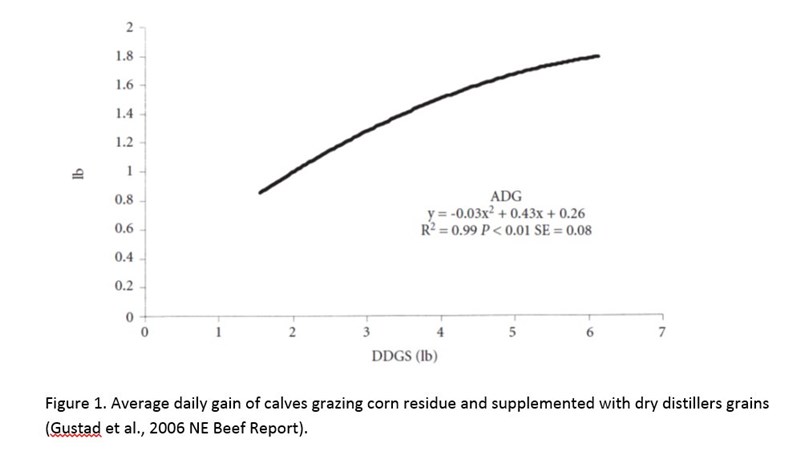Adding Value to Calves by Grazing Corn Residue

Grazing calves on corn residue is a good alternative feed source for producers.
By: Mary Drewnoski, UNL Beef Systems Specialist; Daren Redfearn, UNL Forage and Crop Residue Systems Specialist; and Jay Parsons, UNL Biosystems Economist
Given current calf prices, it is tempting to sell immediately after weaning. However, grazing calves on corn residue and providing supplemental distillers grains is a cost effective way to add value to weaned calves. The two most important considerations to successfully and economically increase calf value are stocking rate and supplementation level.
Grazing corn residue is unique from all other forages in that the total amount of forage available is present at turn out. Because the quality and availability of forage decreases over time, following the recommended stocking rate is essential to achieving targeted gains.
It is important to remember that for every bushel of corn produced, there are approximately 16 pounds of leaf and husk. However, some leaf and husk will be lost to wind and trampling.
Based on this, the recommend stocking rates are based on the availability of 8 pounds of leaf and husk per bushel of corn. This means that fields with greater grain production can have greater stocking rates than fields with lower grain yields (Table 1). However, it should be noted that the leaf and husk of irrigated fields (3.7% CP and 52% digestible) are lower quality than dryland fields (6.4% CP and 50% digestible).
When stocked appropriately, ADG (Average Daily Gain) from dryland corn production may be greater than ADG of calves from stover produced under irrigated corn production. Data from UNL suggests that supplemented calves grazing irrigated corn fields with 3 lbs/d of dry distillers grains (DDGS) will gain 1.3 lbs/d. When the supplementation level is increased to 6 lbs/d of DDGS gains increase to 1.8 lbs/d (Figure 1).
Using a price of $150/ton for DDGS, it will cost $0.23 per day to supplement at 3 lbs/d and $0.45 per day to supplement at 6 lbs/d. With current calf and feed prices, supplementing for increased ADG will be more profitable.
If you are close to an ethanol plant, modified distillers grains are usually a less expensive source of protein and energy than dried distillers grains. Plus, modified distillers grains has the added benefit of being able to be fed on the ground. It is important to remember that modified distillers are about 50% DM, so twice the amount is required to achieve the same gain as supplementing dried distillers grains.







